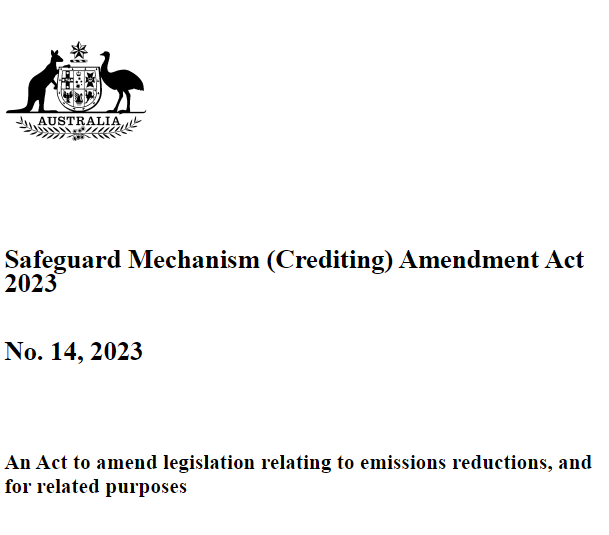The Australian Government has finalized its amendments to the Safeguard Mechanism scheme. These reforms, set to take effect on July 1, 2023 and aim to regulate high-emitting facilities in the resources and industrial sectors in line with Australia’s climate goals of reducing emissions by 43% below 2005 levels by 2030 and achieving net zero emissions by 2050.
The recently released Revised Safeguard Rules provide further details on key aspects of the Safeguard Mechanism. They outline how emissions baselines will be calculated based on a production-adjusted framework and progressively tightened over time. Noteworthy provisions include declining emissions intensity baselines and requirements for offset justifications.
Under the declining baselines approach, covered facilities will be subject to a combination of facility-specific emissions intensity and industry-wide default emissions intensity. The facility-specific intensity will have a weighted value, declining from 90% in FY 24 to 20% in FY 29, and eventually reaching zero. Additionally, the default emissions intensity will reduce by 4.9% annually (3.3% from FY 31) to facilitate the transition towards net zero emissions.
Regarding offset justifications, the National Greenhouse and Energy Reporting (Safeguard Mechanism) Amendment (Reforms) Rules 2023 state that facilities relying on Australian Carbon Credit Units (ACCUs) to meet 30% or more of their emissions reduction requirements must submit a written explanation to the Clean Energy Regulator. This explanation should address why additional carbon abatement measures were not pursued, considering technological limitations, regulatory barriers, and future abatement opportunities. The statement will be published on the regulator’s website, excluding any commercially sensitive information.
As businesses prepare for the reformed Safeguard scheme, several important considerations emerge. The resetting and annual decline of emissions baselines are expected to drive increased demand for ACCUs, encouraging investments in emissions reduction technologies and the trading of ACCUs and Safeguard Mechanism Credits (SMCs). Companies should assess their ACCU/SMC requirements, aligning them with internal carbon offset acquisition strategies. The key compliance dates are listed in the figure below.
Furthermore, facilities relying on ACCUs should be mindful of the offset justification process, which intersects with voluntary and mandatory climate reporting obligations. With growing expectations for corporate alignment with climate-related financial disclosures and potential mandatory climate reporting, businesses must be cautious about misleading and deceptive conduct when formulating offset justifications.
Compliance issues related to SMCs, such as their classification as financial products under federal laws, anti-money laundering legislation, and potential greenwashing risks, should be taken into account.
Please use the link to the 9 page factsheet issued by the Government if you require more details.
https://www.dcceew.gov.au/sites/default/files/documents/safeguard-mechanism-reforms-factsheet-2023.pdf
Finally, if you want to have a chat about what you need to do each year or what actions you need to get started on today, please reach out and we can organize a catch up to help you prioritize the ones that have an immediate commercial return.

